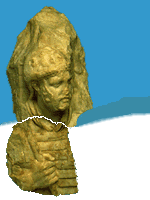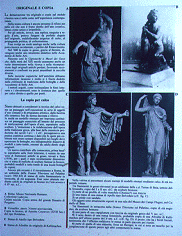

Originals and Copies
In the classical world, the demarcation between originals and copies was not as strict as it is today.Our culture tends to devalue art that is not the direct product of a creative act intended to be unique and unrepeatable.
For the ancients, on the other hand, a replica executed as a work of art could function as an exact duplicate of the original, fulfilling the needs of cult, political propaganda, and art collecting.
 Beginning
in the Renaissance, replicas played an analogous role in postclassical
Western culture.
Beginning
in the Renaissance, replicas played an analogous role in postclassical
Western culture.
In the 17th century, thanks to Bernini, plaster casts also became a didactic tool in academies of fine art.
Thus were born the collections and museums of plaster casts that, from the mid-19th century on, also played an important role in art historical research and the reconstruction of lost ancient sculptures, facilitating comparisons between pieces dispersed among widely separated collections.
We have little hard information about the techniques of ancient copyists, but much can be deduced from the continuity of technical traditions in workshops and art academies.
As literary sources and archaeological discoveries attest, there are essentially two copying techniques: replication through direct impression or the pointing process.
Copyright ©1997, 2002 Ministero per i Beni Culturali e Ambientali, Soprintendenza Archeologica di Roma and the Kelsey Museum of Archaeology, University of Michigan. All rights reserved.
 |
 |
 |
 |
 |
 |
 |
 |
 |
 |
 |
 |